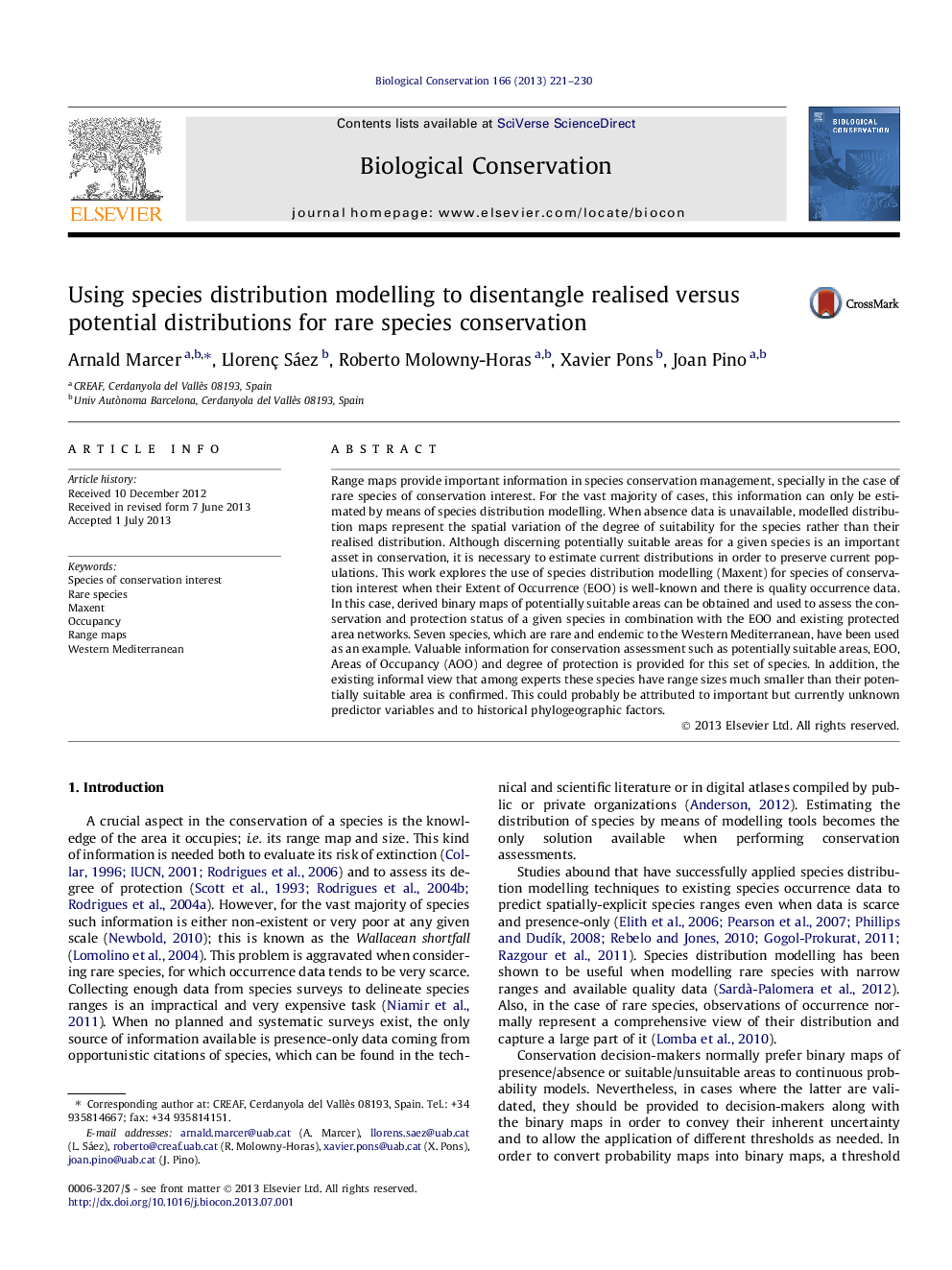| Article ID | Journal | Published Year | Pages | File Type |
|---|---|---|---|---|
| 6300800 | Biological Conservation | 2013 | 10 Pages |
Abstract
Range maps provide important information in species conservation management, specially in the case of rare species of conservation interest. For the vast majority of cases, this information can only be estimated by means of species distribution modelling. When absence data is unavailable, modelled distribution maps represent the spatial variation of the degree of suitability for the species rather than their realised distribution. Although discerning potentially suitable areas for a given species is an important asset in conservation, it is necessary to estimate current distributions in order to preserve current populations. This work explores the use of species distribution modelling (Maxent) for species of conservation interest when their Extent of Occurrence (EOO) is well-known and there is quality occurrence data. In this case, derived binary maps of potentially suitable areas can be obtained and used to assess the conservation and protection status of a given species in combination with the EOO and existing protected area networks. Seven species, which are rare and endemic to the Western Mediterranean, have been used as an example. Valuable information for conservation assessment such as potentially suitable areas, EOO, Areas of Occupancy (AOO) and degree of protection is provided for this set of species. In addition, the existing informal view that among experts these species have range sizes much smaller than their potentially suitable area is confirmed. This could probably be attributed to important but currently unknown predictor variables and to historical phylogeographic factors.
Related Topics
Life Sciences
Agricultural and Biological Sciences
Ecology, Evolution, Behavior and Systematics
Authors
Arnald Marcer, Llorenç Sáez, Roberto Molowny-Horas, Xavier Pons, Joan Pino,
